Where I grew up, it was hard to go nine days in Winter without some sort of snow fall event. Here in North Carolina, nine years is about the average wait for an significant snow. In New York, days off from school because of the weather were very rare, but those days were always met with enthusiasm. A snow day meant sledding on the Thruway bridge or banging around on snowmobiles or just walking around in the woods. Days off from work because of snow were even rarer, and those days were usually met with early beer and earlier bed.
With the beauty of the snow in NC comes the problem of clearing it from the roads and the ridiculous frenzy and panic of the local population. Just the threat of snow is enough to close all schools and most businesses. Bread and milk flies off the store shelves, people forget how to drive and banks close their doors. It took me three days to make a deposit at the local bank branch; even the day of the deposit had a delayed opening.
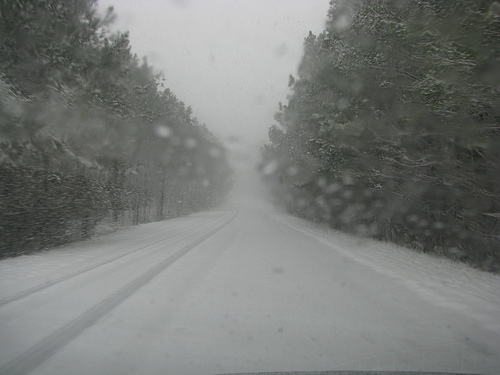
Snow plows are in very short supply around here, and it can take a day just to clear a major highway. We live on a side road off another side road off yet another side road and then down a dirt road, which basically means that we never see the snow plow anywhere near our home.
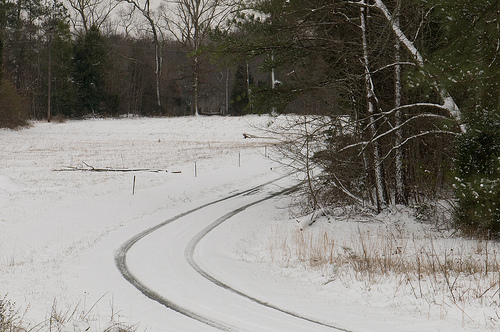
It is nothing like New York where the plows come fast and often, their sounds destroying the quiet of night. I wrote about the plows in Quitter #5. Here is a taste –
Oh, How Long December…
During a snow storm, the plows mostly come at night. In the sturdy, hoary months of childhood in Western New York, I would lay awake listening as the distant scraping of the plow brushed its steel blades over the roughly poured asphalt. In the dry winter air, the low hum could be heard for miles, the flashing orange roof lights of the plow radiating off the lumbering snowflakes, themselves moving unpredictably towards any available surface, wrestling the wind’s vacillating directions.
First the plow would pass to the south of our house, down the thin Barville Road, then up North Byron Road and finally across our unmarked, no-shoulder road. As the sound grew closer I would pull my face up to the window, watching the coming lights reflect off every available inch of ground, the thick cover of flurries yielding very little until the massive vehicle was right in front of my eyes. A wave of snow and rock passed over the giant chisel, driven by a mass of grinding metal and boiling oil, echoing brutal noises off the aluminum siding of the house. The sound and lights would fade as the driver made way through the expansive grid of rurality, on and on towards the gawking of other children unable to sleep.
***************
In Chatham County we are blessed with the ability to grow food all year round. With this blessing comes the curse of trying to fool the natural cycles either through the creative use of energy (wood stove in the greenhouse) or by the less intensive means of row covers and low tunnels.
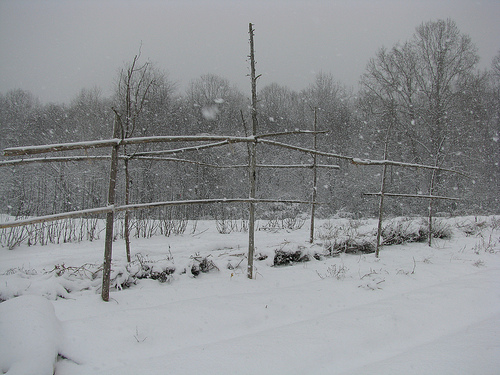
Yesterday’s snow meant that the folks at Piedmont Biofarm had to battle the flakes in order to keep their crops alive. I found farmer Doug Jones busy in the storm sweeping off his row covers with a push broom.
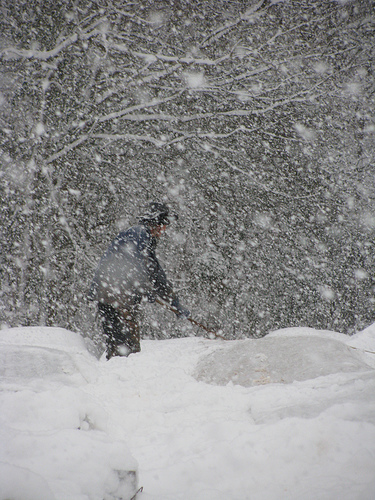
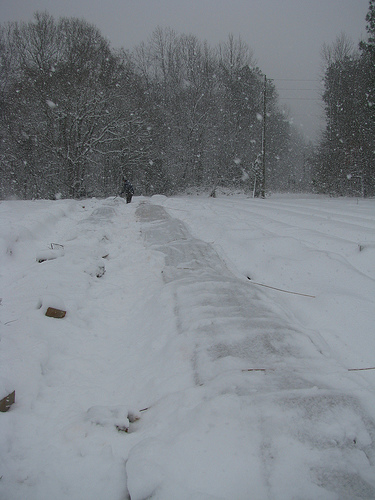
Even he had to admit that it was a losing battle. A day later, he and a few of his interns finished the work, clearing the snow and ice by hand.
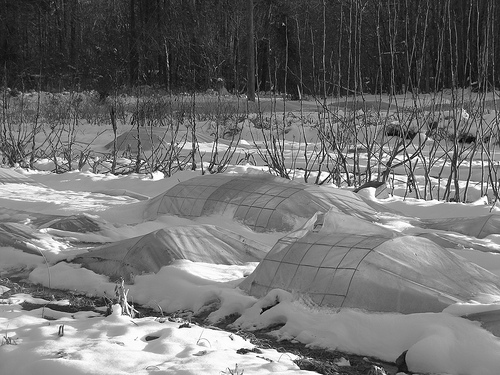
***************
Yesterday ended up being a half day of work for myself and Kristin. The first snow at the farm was an event for me even though snow and cold and ice is basically in my blood. I haven’t studied an icicle in years. The icicle is an indication of poor roofing and a lack of insulation, but let’s leave all that for the adults to think about…

One thing you don’t usually see is a Magnolia grandiflora full of snow. The evergreen leaves stand out during the brown of our short Winter, but they really stand out against the cold white of an even shorter and rarer snow fall.
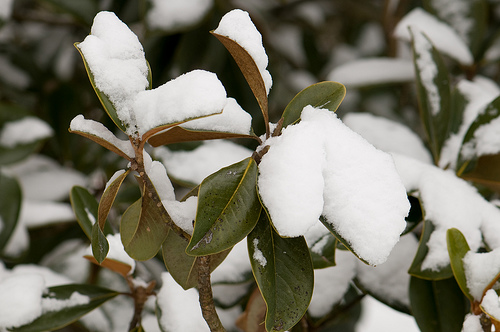
And what would the short work day be without a little snow fight action?
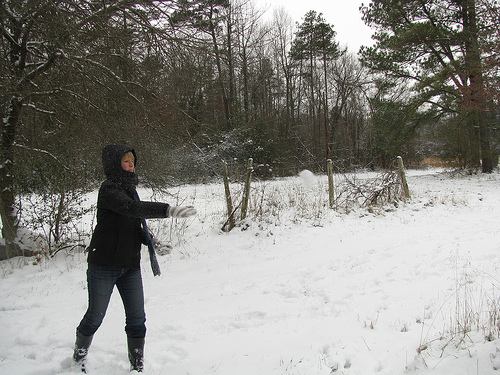
We threw snowballs at each other and at 80 (our doggie). But she was busy with work most of the afternoon, and could barely be bothered to play along.
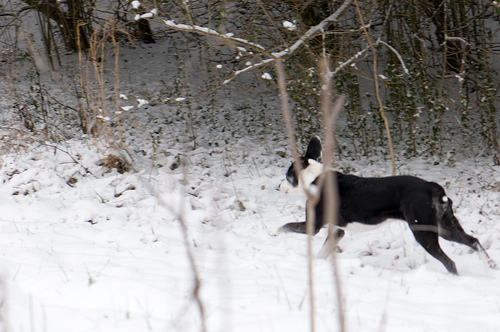
Her “work” mostly consists of chasing mice in the back field and running around like a crazy person.
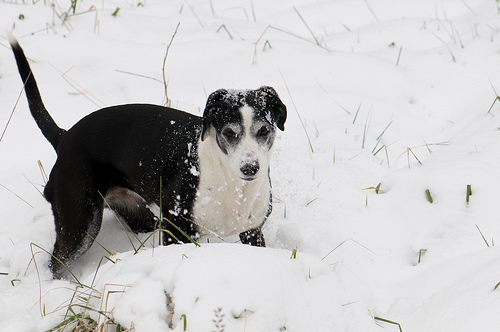
This work keeps her occupied and healthy, alert and slim. It is almost a script – the mice run; she follows their scent, bouncing from grass clump to tree stump, digging up rocks and fallen branches all day long. The mice run some more. Repeat.
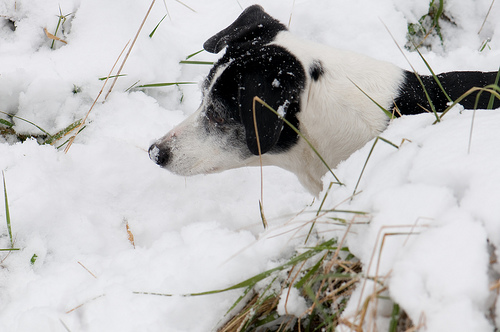
80 doesn’t really come off as a killer. Now I’m starting to think that I should be cheering her on. After all, with a depleted mouse population, we may be able to lower the tick infestation in the Spring. Mouse blood is the gateway drug for young ticks. Damn delinquents…
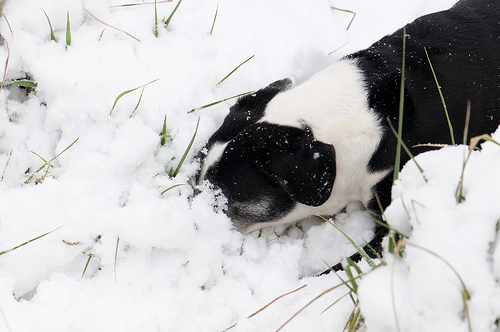
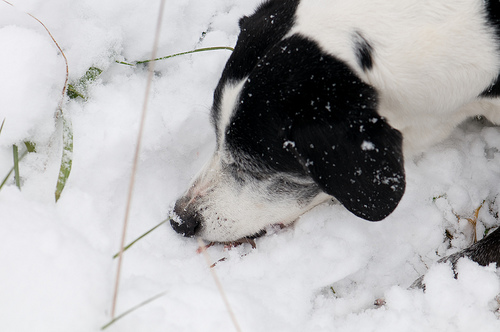
After she caught the mouse (the first one I ever saw her catch), I basically took it away from her. Later on in the evening I thought that it probably would be best if she had been allowed to eat her catch. We live in the middle of nowhere, so these field mice are not eating poison. Kind of a waste of protein.

From now on at Circle Acres, the number one rule for all of us is “You eat what you kill.”
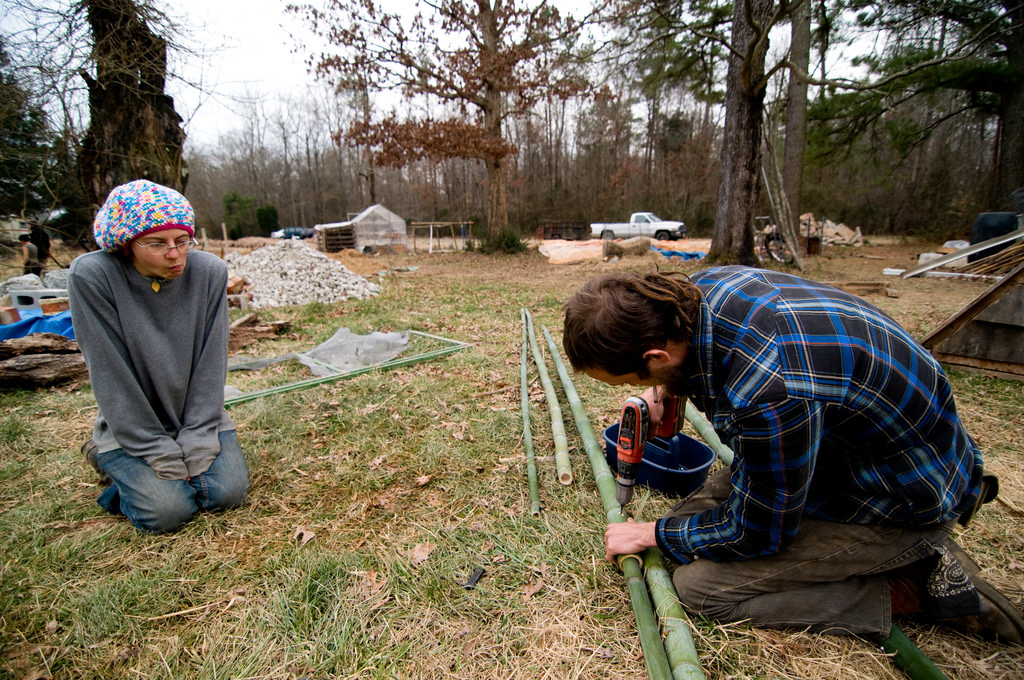

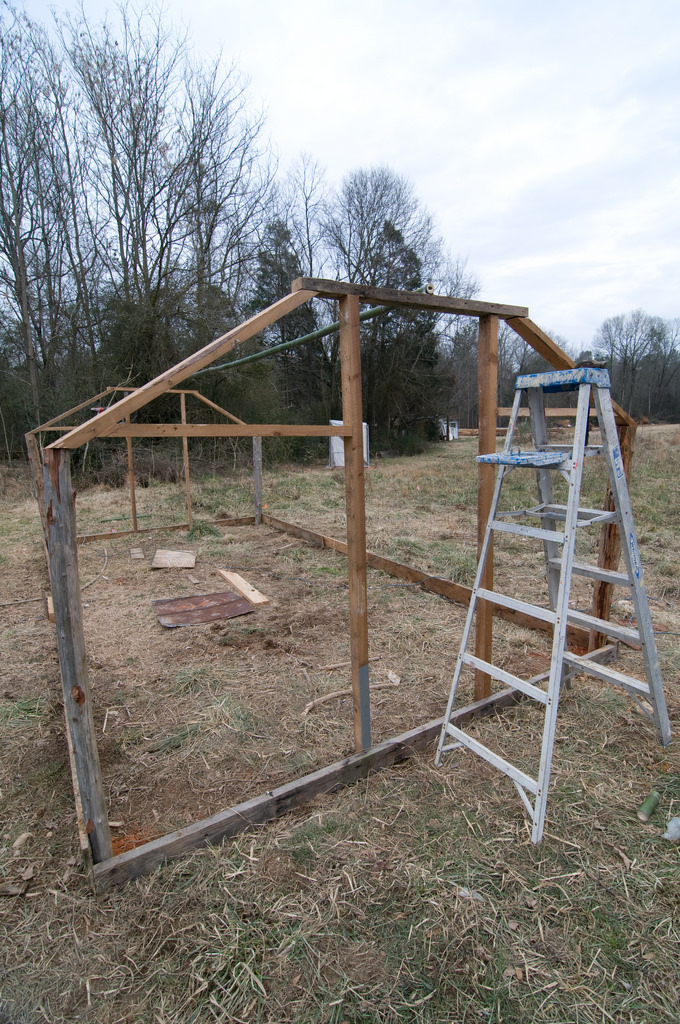

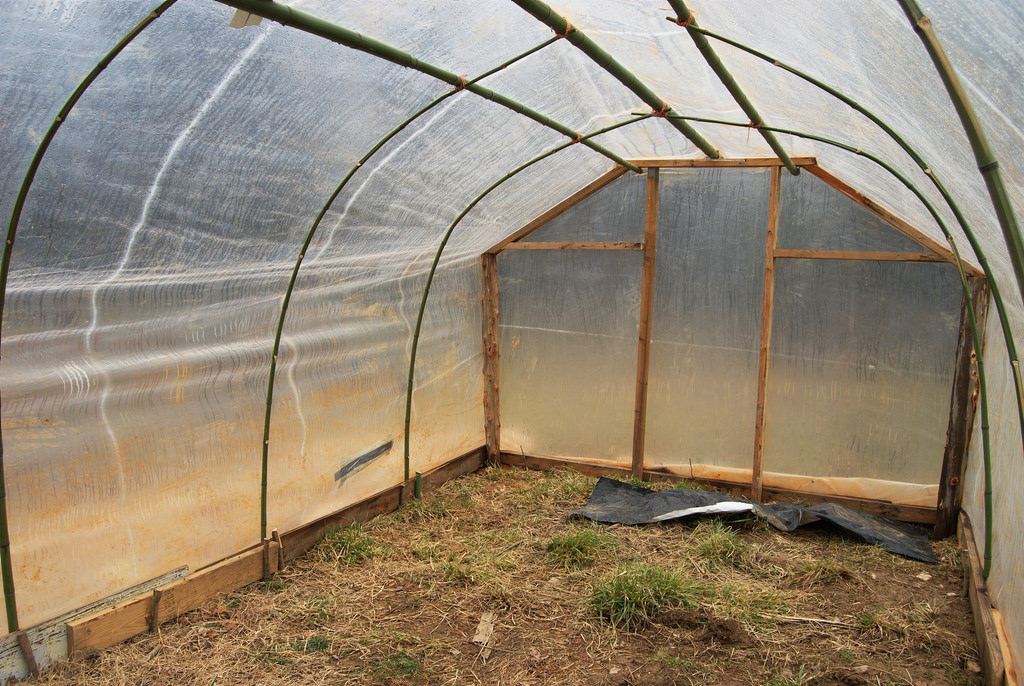

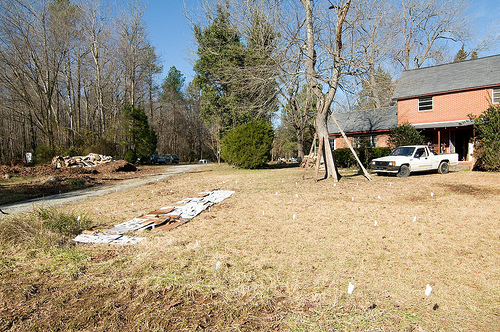

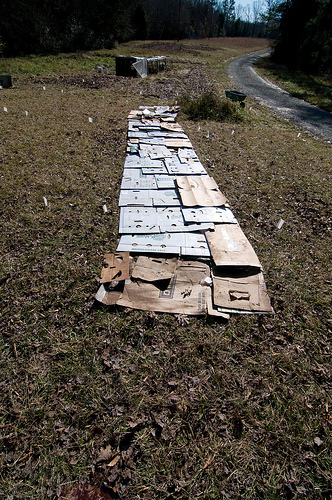
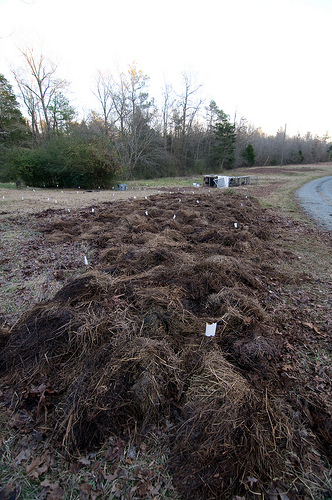
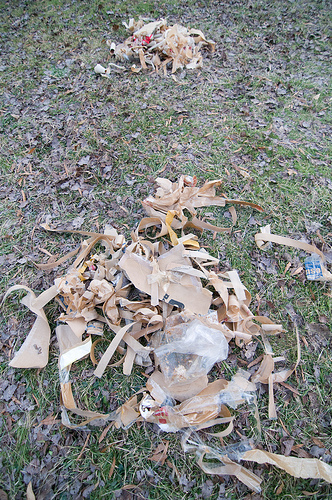
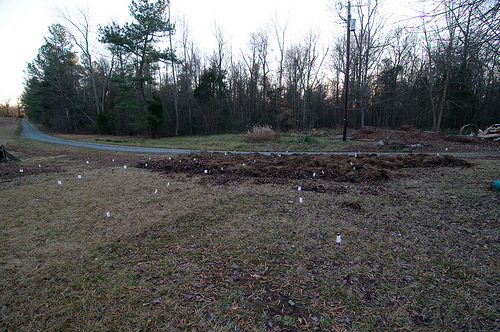
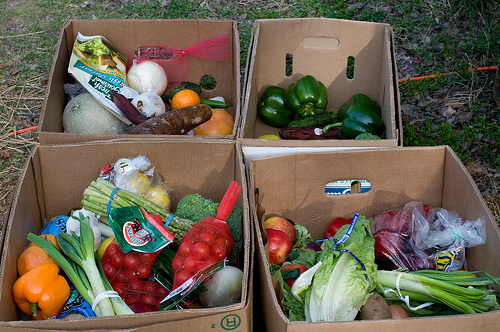

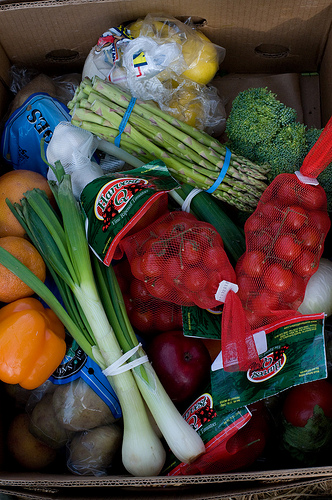


















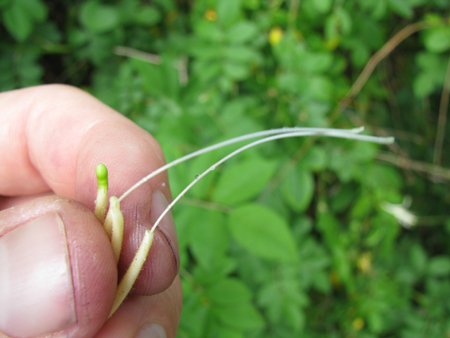
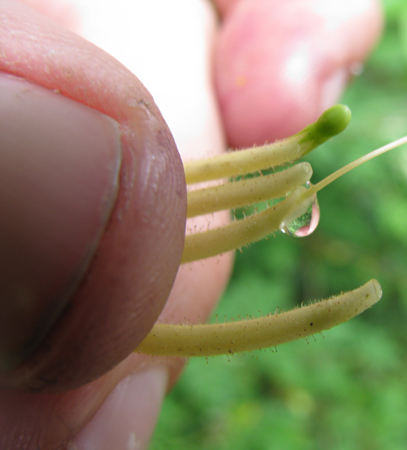
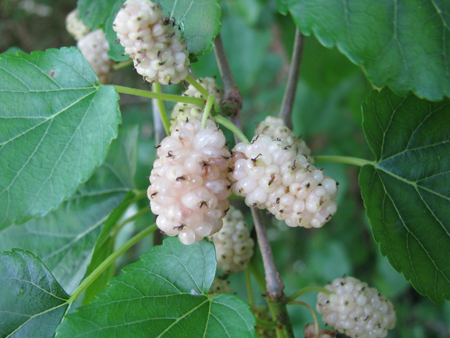
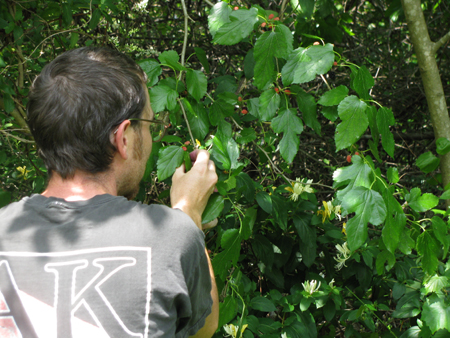
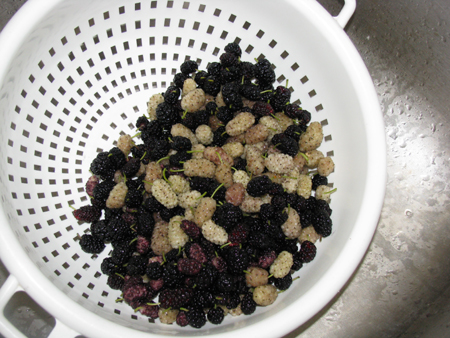





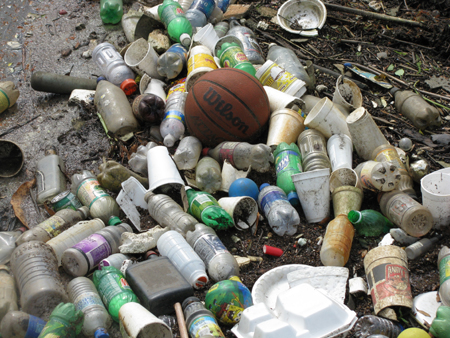
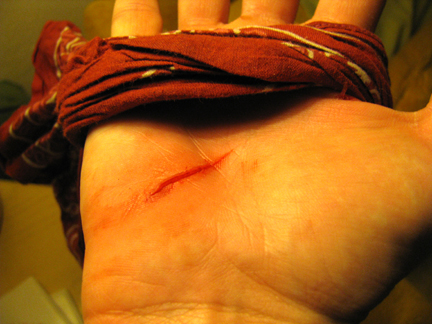

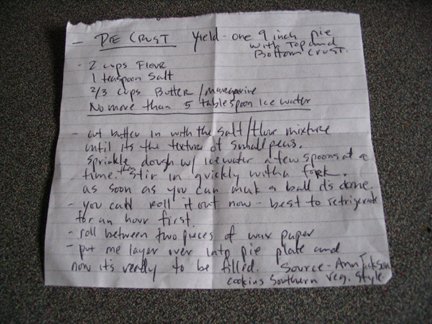

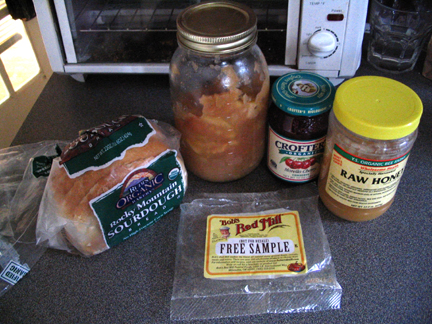

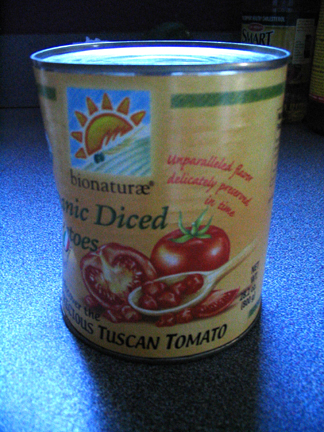
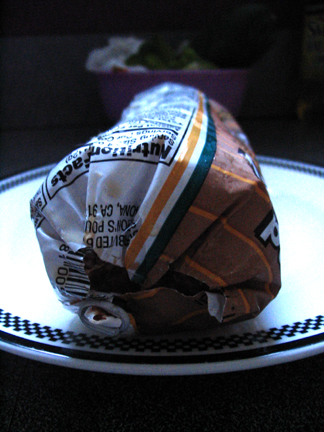
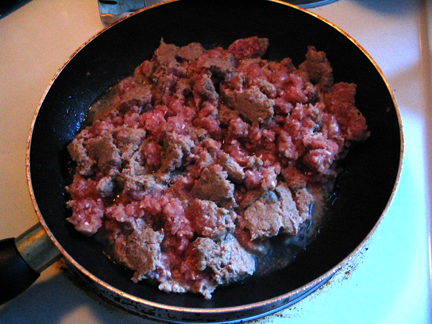
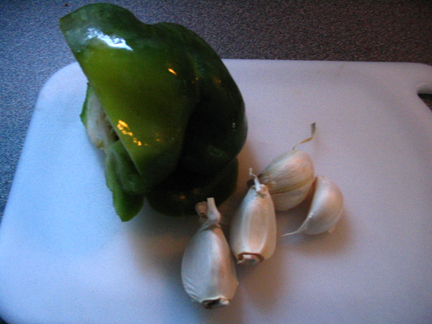
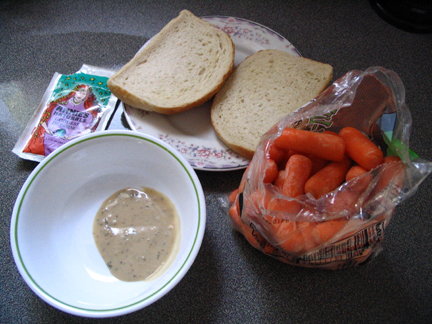

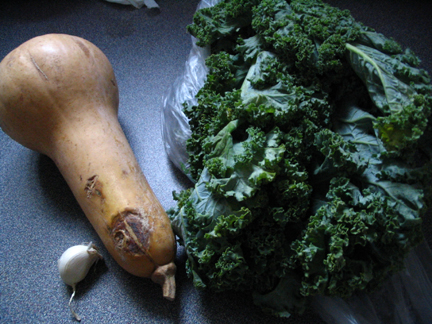
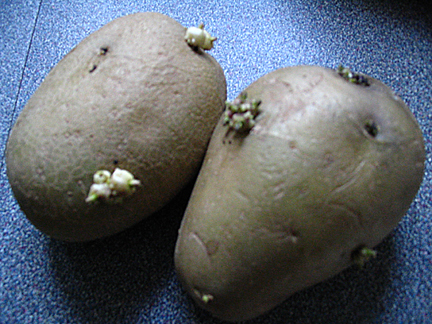
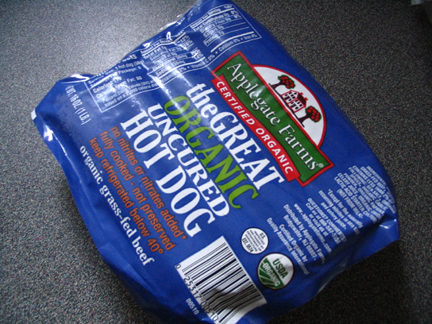
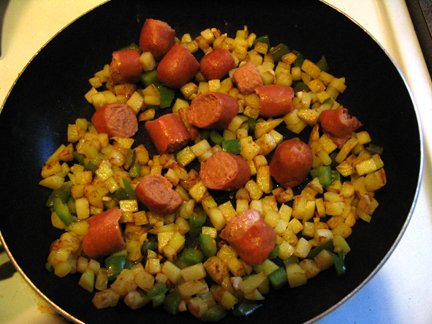
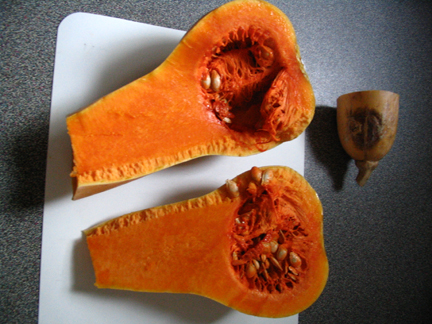
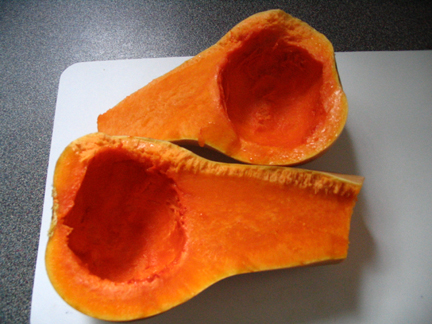
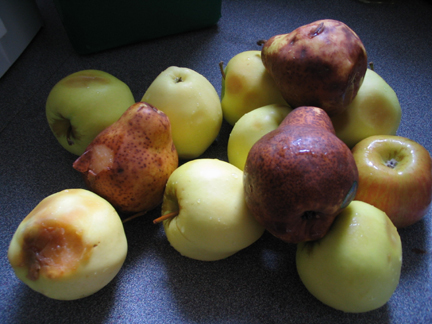

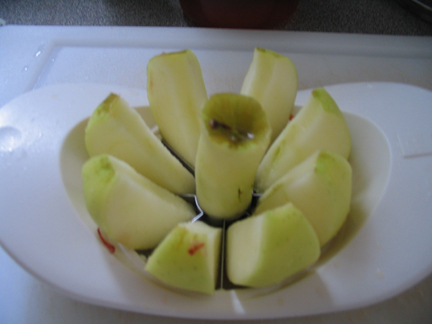
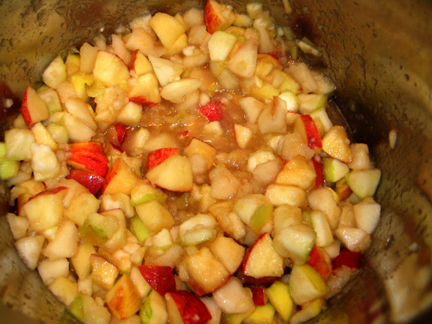
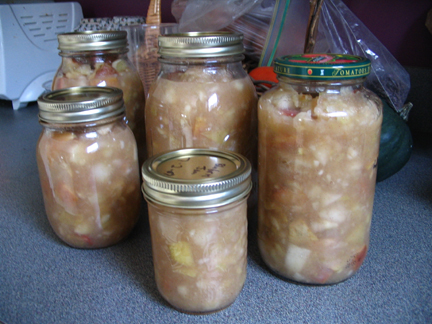
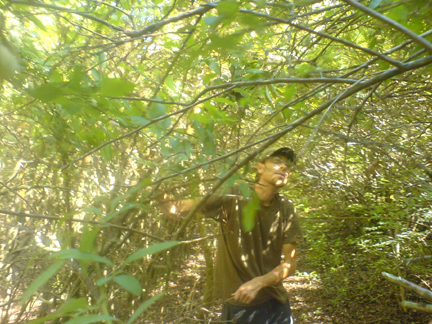

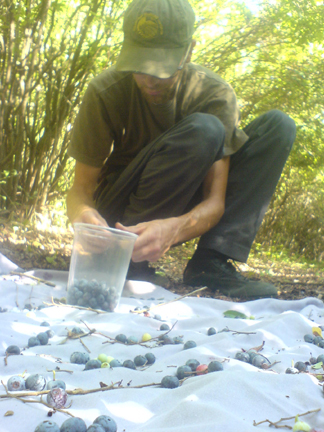
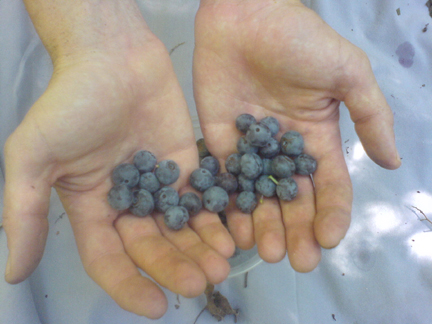
January 30, 2010 at 10:32 am
Wow that greenhouse looks great. I hope to build a hoop house like that in the next year or so. I like the use of bamboo. You will have to let us all know how well it holds up.
January 30, 2010 at 8:24 pm
Can you give more details into how and where you got the bamboo sticks (I know for a fact they do not occur naturally in the Carolinas) and the translucent tarp, especially for this amazing price?